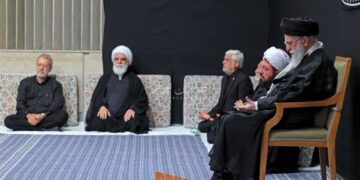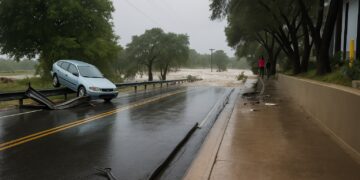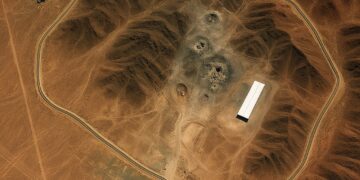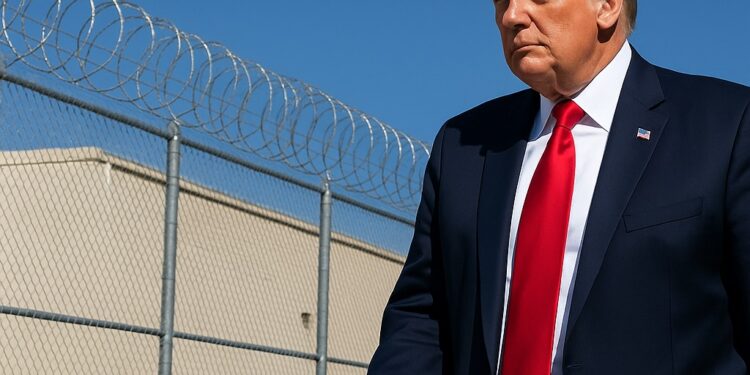📰 Trump to Visit Controversial ‘Alligator Alcatraz’ Detention Facility in Florida Everglades
President Donald Trump is set to visit a newly constructed immigration detention facility deep in the Florida Everglades on Tuesday, a move that has ignited a firestorm of political, environmental, and humanitarian debate. Dubbed “Alligator Alcatraz” by supporters and critics alike, the facility is being touted by Trump and Florida Governor Ron DeSantis as a bold step in their aggressive immigration enforcement agenda — but it’s also drawing fierce backlash from environmentalists, Native American leaders, and civil rights advocates.
🏗️ A Remote Fortress in the Swamp
The detention center is located on a remote airstrip at the Dade-Collier Training and Transition Airport, about 50 miles west of Miami. Surrounded by dense wetlands teeming with alligators, pythons, and mosquitoes, the site is being promoted by Florida officials as a natural high-security zone.
“There’s really nowhere to go,” said Florida Attorney General James Uthmeier, who spearheaded the project. “If people get out, there’s not much waiting for them other than alligators and pythons”.
The facility, which will initially house up to 5,000 detainees, consists of heavy-duty tents and trailers equipped with medical units, kitchens, and portable restrooms. It is expected to cost $450 million annually, with much of the funding coming from the Federal Emergency Management Agency (FEMA) under the Department of Homeland Security’s Shelter and Services Program.
🧭 Political Theater or Policy Showcase?
Trump’s visit is being framed as a high-profile endorsement of his immigration crackdown. The former president is expected to tour the facility alongside DHS Secretary Kristi Noem and Governor DeSantis, who has used emergency powers to fast-track the project since early 2023.
“This is going to be a place where DHS has said we need help with the space so illegals can be processed and then they can be deported right from here,” DeSantis said during a recent Fox News appearance.
The facility’s nickname, “Alligator Alcatraz,” has been embraced by the Trump administration and the Florida GOP, which has begun selling branded merchandise featuring alligators in ICE hats and slogans like “Nowhere to go, nowhere to hide”.
🌿 Environmental and Indigenous Opposition
Despite the political fanfare, the project has sparked intense opposition from environmental groups and Native American communities. The site lies within a 30-square-mile area of wetlands near Big Cypress National Preserve and Everglades National Park — a region home to endangered species like the Florida panther.
“This scheme is not only cruel, it threatens the Everglades ecosystem that state and federal taxpayers have spent billions to protect,” said Eve Samples, executive director of Friends of the Everglades.
The Miccosukee and Seminole tribes have also condemned the facility’s construction, citing its proximity to sacred lands and burial grounds. “This is an affront to our heritage and our sovereignty,” said one tribal representative during a protest over the weekend.
📢 Protests and Legal Challenges
Hundreds of protesters gathered outside the site on Saturday, waving signs and chanting slogans against what they called a “prison in the swamp.” Environmentalists, immigration advocates, and local residents voiced concerns about human rights violations, ecological damage, and the lack of transparency in the project’s approval process.
A coalition of advocacy groups, including the Center for Biological Diversity and Friends of the Everglades, has filed a federal lawsuit seeking to halt construction. The suit argues that the state failed to conduct an adequate environmental impact study and violated federal land use regulations.
✈️ Strategic Location and Security
The facility’s location was chosen in part for its existing 10,500-foot runway, which allows for direct deportation flights. Florida National Guard troops and Highway Patrol officers have been deployed to secure the perimeter, and the state has hired private contractors to provide essential services.
“This is a one-stop shop for processing and deportation,” said Uthmeier. “We don’t need to build a lot of brick and mortar. Mother Nature does most of the work”.
🧾 The Bigger Picture
“Alligator Alcatraz” is being hailed by Trump allies as a model for future immigration enforcement — a stark contrast to the more humanitarian-focused policies of previous administrations. But critics warn that it sets a dangerous precedent for how the U.S. treats undocumented migrants.
“This isn’t just about immigration,” said Maria Bilbao of the American Friends Service Committee. “It’s about how we define justice, dignity, and the role of government in people’s lives”.
📍 What Comes Next?
The first detainees are expected to arrive at the facility as early as July 1. Meanwhile, protests are expected to continue, and legal battles may delay or alter the facility’s operations.
As Trump prepares to tour the site, the nation watches — not just to see a detention center in the swamp, but to witness a flashpoint in the ongoing debate over immigration, environmental stewardship, and the limits of executive power.














































